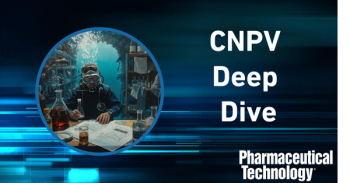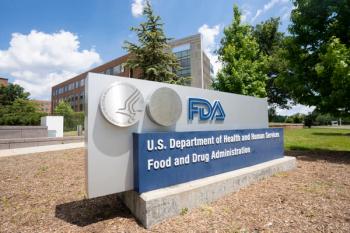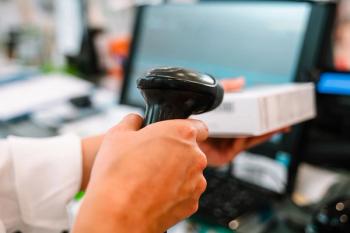
How AI, Machine Learning, and Large Language Models Enhance Bioanalysis
Long Yuan, PhD, director of the Department of Drug Metabolism and Pharmacokinetics at Biogen, explains how artificial intelligence, machine learning, and large language models are used in performing bioanalysis.
Artificial intelligence (AI), machine learning (ML), and large language models are tools that are seeing increasing use in a variety of pharmaceutical development and manufacturing areas. Pharmaceutical Technology® spoke with Long Yuan, PhD, director, Department of Drug Metabolism and Pharmacokinetics,
“There is significantly increased interest and a great potential for AI to make a significant impact on various aspects of bioanalysis, including improving the quality, efficiency, compliance, and also reducing human errors,” Dr. Yuan says.
He believes these tools can be utilized to enhance bioanalytical method development, such as using AI to predict optimal conditions for bioanalytical assays. “This will be especially useful for assays that require significant method development, like the kind of trial-and-error type of method development, for example, for nick and binding assays, the optimization of capture and detection regions conditions,” he says.
He also points to the benefit of using AI in data processing and interpretation. “For example, AI can help to do the automated peak detection integration, calculate and generate the concentration data, and even integrate with the downstream report generation process,” he explains. AI can also be used to create study protocols and validation reports.
The specialized form of ML, large language models, can also be used to enhance the automation of biomedical workflows as well as streamlining and integrating various bioanalytical tasks, according to Dr. Yuan. “For example, we can help streamline and automate the whole biomedical process, including sample preparation, instrument calibration, routine sample analysis, data processing, documentation, and even reporting of the data,” he explains.
Dr. Yuan will be moderating the symposium, “Oligo Bioanalysis, Platforms and Methods” on Wednesday, Nov. 12, 2025 at 9AM in 221 AB at
Click above to watch the interview.
About the speaker
Long Yuan, PhD, is currently the Director and Head of the Bioanalytical group in the Department of Drug Metabolism & Pharmacokinetics at Biogen. He leads a group of scientists to provide bioanalytical support for diverse modalities including small molecule drugs, oligonucleotides, biologics and AAV gene therapies, in drug discovery and development. Long received his B.S. in Medicinal Chemistry from Fudan University (Shanghai, China), and his Ph.D. in Medicinal Chemistry from the College of Pharmacy, University of Illinois Chicago (IL, USA). Before joining Biogen, he worked in the Department of Bioanalytical Sciences at Bristol Myers Squibb (NJ, USA). His research focuses on developing bioanalytical methodologies for various molecules, with recent emphasis on oligonucleotides, including ASO, siRNA and antibody-oligonucleotide conjugates. He has published over 50 peer-reviewed papers, including 7 book chapters.
Transcript
Editor's note: This transcript is a direct, unedited rendering of the original audio/video content. It may contain errors, informal language, or omissions as spoken in the original recording.
My name is Long Yuan. I'm currently the Director and Head of biomedical group in Biogen DNPK, so I'm needing a group of scientists to provide bionic support for different mortalities, including small molecule drugs, oligonucleotides, biologics and AV gene therapies.
PharmTech: How can artificial intelligence and machine learning be used to enhance bioanalysis in bio/pharmaceutical development and manufacturing?
Yuan: AI and machine learning is still in a relatively early stage for the application in Bioanalysis. However, I do see there is significantly increased interest and a great potential for AI to make a significant impact on various aspects of biomanac sales, including improving the quality, efficiency, compliance and also reducing human errors. Here are some examples, I think they may be applied first is to enhance bioanalytical method development. For example, AI can predict optimal conditions for bioanalytical assays. This will be especially useful for assays require significant method development like that, kind of trial and error, type of method development, for example, for nick and binding assays, the optimization of capture and detection regions, conditions. The second area is the data processing and interpretation. For example, AI can help to do the automated peak detection integration, calculate and generate the concentration data and even integrate with the downstream report generation process. The other area is like to generate the study protocol, Biennale reports, validation reports to improve the compliance with regulatory.
How can large language models be applied to bioanalytical workflows?
Large language models are a specialized form of machine learning.These large language models, like ChatGPT, can significantly enhance the biomedical workflow by automating, streamlining and integrating various tasks for Bioanalysis. For example, we can help streamline and automate the whole biomedical process, including sample preparation, instrument calibration, routine sample analysis, data processing, documentation and even reporting of the data. It can also help to improve the regulatory compliance the QC, QA, large language models can help review electronic lab load books and audit trails to ensure the compliance with FDA or EMA guidelines. It may also help to connect to the new system or year end systems to pull the data, to prepare the report and draft the SOPs like those type of tasks. One unique features for large language models is it can also serve as it can be also more interactive with human. It's more like a real human. So so energies can interact with large language models to get guidance and assistance on troubleshooting a regular biological workflow, those type of tasks.
Newsletter
Get the essential updates shaping the future of pharma manufacturing and compliance—subscribe today to Pharmaceutical Technology and never miss a breakthrough.




